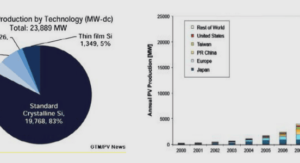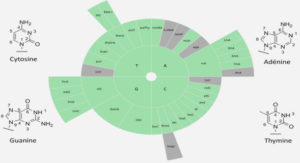Accurate prediction of aircraft aerodynamic performance is critical to manufacturers like Bombardier Aerospace for design and development activities. Even though advances in computing power, modeling approaches, and computational fluid dynamic algorithms can now provide performance estimates, wind tunnel experimental data are still required for validation of the analytical results. It is critical that the degree of goodness of the collected data or the data uncertainty be considered, as the uncertainty interval effectively sets the resolution at which comparisons can be made between experimentally obtained data and simulation results (Coleman and Steele, 2009).
The contributing factors to the total uncertainty at a wind tunnel are the error sources related to data acquisition, data processing, calibration and math models used to adjust data, as well as the geometry and surface finish of the test article. Spatial flow nonuniformity, flow unsteadiness, wall interference and buoyancy effects are among the aspects of the test environment which further contribute to the overall uncertainties of the result (AIAA, 1999). Developing a methodology for estimating the combined effect of such factors or the measurement uncertainty is the first step in data quality assessment and control at any test facility, as data quality can only be improved once it is properly quantified. Such methodologies have been implemented already at many wind tunnels in North America including those at the NASA Langley, Marshall, Glenn and Ames Research Centers (Walter, Lawrence and Elder, 2010; Springer, 1999; Stephens et al, 2016; Ulbrich and Boone, 2004).
The primary objective of the present master’s project is to equip the National Research Council (NRC) 1.5 m trisonic wind tunnel with an error propagation model that would estimate the uncertainty of all the result parameters in the Bombardier half-model experiments, and report them in the form of 95-percent confidence intervals around the measured values, following the methodology recommended by the American Institute of Aeronautics and Astronautics (AIAA) Standard S-071A 1999. The AIAA Standard (1999) on the assessment of experimental uncertainty presents a practical framework for quantifying and reporting uncertainty in wind tunnel testing. Guidelines are given on how to estimate the random and systematic errors of the measured variables, which propagate through the data reduction equations to yield the uncertainties of the experiment results. However, no particular strategy is offered for the implementation of the recommended error propagation methodology for a specific test facility. The phases of the present thesis project involved understanding the measurement system and the structure of the data reduction routine of the Bombardier half-model experiments, identifying the independent variables of the data reduction equations, estimating the corresponding precision and bias errors, and finally developing an algorithm for propagating the errors through the data reduction equations in order to obtain and report the uncertainties of the test results. The focus has been on automating the uncertainty analysis process by implementing the error propagation methodology within the existing data reduction routine so that the analysis can be performed at every measurement point throughout an experiment, over a range of test conditions, model configurations, and model attitudes. The developed algorithm also provides different breakdowns of the uncertainties, in order to investigate the contribution of the individual variables, and also to separate the effect of systematic errors from that of random errors. Such breakdowns can be used to prioritize data quality improvement initiatives.
It should be emphasized that the analysis is limited to the Bombardier half-model experiments, and only reflects the errors of the data acquisition and reduction processes rather than the overall facility performance. The features and the analytical capabilities of the developed algorithm are demonstrated in this report, using the best available estimates of the bias and precision errors of the measured variables and the data of a number of runs from the series of Bombardier experiments performed in February 2014.
The NRC 1.5 m blowdown trisonic wind tunnel has a speed range of Mach 0.1 to 4.25. A schematic of the facility is shown in Appendix I. The compressor plant delivers 45 lb/sec of filtered dry air at 312 psi to three air storage vessels. When a run is initiated, air flows from the storage tanks to the settling chamber. The flow is regulated by a control valve to maintain the settling chamber stagnation pressure within 0.5 percent of the set point value during a run. A large matrix of long steel tubes placed at the outlet of the air storage keeps the temperature of the outflowing air at a nearly constant value to minimize Reynolds number changes. After passing through acoustic baffles and turbulence screens, the air accelerates in a nozzle, whose flexible plates are set to achieve a desired test section Mach number. Downstream of the test section, the air is slowed down through a variable diffuser and discharged through an exhaust silencer to atmosphere (Brown, 1977). In subsonic and transonic operations, the servo-controlled throat area of the downstream variable diffuser establishes the nominal test section Mach within very close limits.
In half-model experiments, the test article is mounted with a reflection plane on the halfmodel sidewall force balance in the 1.5 by 1.5 m transonic test section with perforated walls. The balance consists of three normal and two axial strain gauged flexure elements, which allow the overall forces and moments to be measured. The balance also provides the means of varying the pitch attitude. A diagram of the half-model balance is presented in Appendix II. Data acquisition of a typical test consists of a number of wind-off data collections or tares, followed by the wind-on run data recording. A wind-off duplicate of the run, with the model pitching, is used to subtract inertial forces or weight contributions from the wind-on data in order to obtain the true aerodynamic loads. Other tare data are used for checking the calibration of the pressure measurement instruments.
Uncertainty Analysis Overview
Error is the difference between a measured quantity and its true value, caused by an error source. It is assumed that each error whose sign and magnitude are known have been removed by correction. Any remaining error is therefore of unknown sign and magnitude (Coleman and Steele, 2009). Lower error is associated with higher accuracy, as accuracy indicates the closeness of the experimentally obtained value to the truth (AIAA, 1999). However, since the true value of a quantity is generally unknown, both error and accuracy are qualitative terms. Uncertainty U is a quantified estimate of the error, based on statistical analysis, experience and judgment. An uncertainty interval is a range within which the actual but unknown value of an error is believed to fall, with a certain confidence. The estimates are commonly reported at a 95-percent confidence level (AIAA, 1999), meaning the true value of a quantity is expected to be in the bracket defined by ±U around the obtained experimental value, 95 times out of 100. Uncertainty analysis is a strategic approach to describing the degree of goodness of a measurement or an experimental result by quantifying the error associated with the obtained value in the form of a 95-percent confidence uncertainty interval.
INTRODUCTION |





